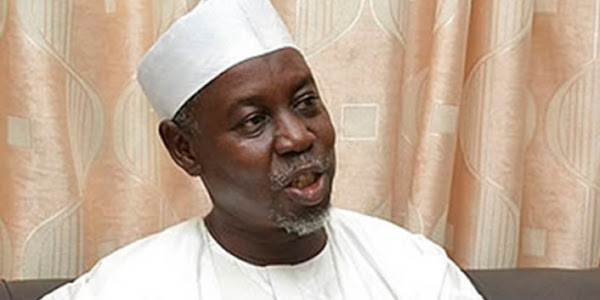The efforts of the Federal Government at cleaning up and remediation of Ogoniland devastated by oil spill may have received a boost as the Minister of Environment, Suleiman Hassan Zarma, is leading some government officials to the United Kingdom on an international working visit.

Facilitated by the United Nations Environment Programme (UNEP), the visit aims to appraise Zarma and his delegation of international experiences and best practices relative to the clean-up of large-scale contaminated sites.
Experts have said that the restoration of Ogoniland initiated by the Federal Government of Nigeria could prove to be the world’s most complex and longest oil clean-up exercise ever undertaken.
The UNEP assessed the extent and severity of the contamination in 2011 and found severe and widespread contamination due to oil production spanning several decades. The Federal Government of Nigeria has committed to implementing the UNEP recommendations.
Upon assumption of office in 2015, President Muhammadu Buhari underscored his resolve to restore livelihood in the oil-contaminated Ogoniland, by creating the Hydrocarbon Pollution Remediation Project (HYPREP), a dedicated institution to manage the clean-up process under the oversight of the Federal Ministry of Environment.
According the ministry in a statement made available to EnviroNews on Tuesday, April 30, 2019, it is in order to equip them better to deliver on their mandate that the minister is leading members of HYPREP’s Governing Council as well as other senior stakeholders currently on a working visit to five sites in the United Kingdom, as part of a series of international site visits. These include Biogénie’s Trecatti and Redhill soil treatment facilities in South Wales and South East England respectively, the Coed Darcy regeneration project in South Wales, the former Avenue Coking Works in the East Midlands, and ALS Laboratories in North West England.
“Biogénie’s Trecatti contaminated soil treatment facility in Merthyr Tydfil in South Wales can clean-up a variety of contaminants with a specific focus on soils impacted by petroleum hydrocarbons. In addition, the Biogénie’s Redhill soil treatment facility in South East England operates at a larger scale and can accept a wider range of types of waste. It also acts as the main treatment facility for London and the South East.
“Biogénie’s facilities treat soil which would otherwise be disposed of as hazardous waste. The cleaned-up soil is re-used for restoration and landscaping, demonstrating how a treatment facility can operate as a regional hub to accept hydrocarbon-impacted soils from several sites. The Redhill facility also shows how decontamination processes used at other sites can be scaled up,” the statement disclosed.
In addition, the visit will be an opportunity for the delegation to visit Coed Darcy, said to be one of the largest regeneration projects in the United Kingdom. It was formerly occupied by the BP Llandarcy Oil Refinery until operations ceased in the mid-80s. St. Modwen is reportedly working with Atkins to clean up and redevelop the site in a sustainable way. By 2027, this redeveloped site will be transformed into a new £1.2 billion urban village that will house around 10,000 people.
The statement reads further: “With a legacy of coal mining, iron works, and chemical works, Chesterfield’s former Avenue Coking Works in the East Midlands is widely regarded as one of the most heavily contaminated industrial sites in Europe. This site offers an opportunity for HYPREP’s Governing Council to witness land that was redeveloped. Around three-quarters of the site were restored for open space, community and ecological uses, with the remainder being used for residential and commercial development.
“The international site visit will allow the delegates to observe an extensive range of in-situ and ex-situ remediation techniques, such as soil washing, bioremediation, thermal desorption, and separating techniques, among others. It is envisaged that these demonstrations and visits will build HYPREP’s capacity to reuse and recycle as much site-won material as possible, contributing to the sustainability of the clean-up exercise.
“Finally, ALS operates one of the largest laboratories in Europe. The visit to their Chester laboratory in North West England will focus on quality, accreditation, sample preparation, analysis of petroleum hydrocarbons, reporting, and interpretation of analysis. Delegates will have the opportunity to tour this modern laboratory facility and identify the aspects that could be replicated in Nigeria to increase the overall quality of local laboratories.”
UNEP’s 2011 Environmental Assessment of Ogoniland evaluated that bringing back important ecosystems to full productive health could take up to 30 years. The report had also recommended that a $1 billion fund be set up for the first five years of remediation activities – funds which have already been committed. Once complete, the environmental clean-up of Ogoniland could serve as a model for replication in both Nigeria and the region, said UNEP.
